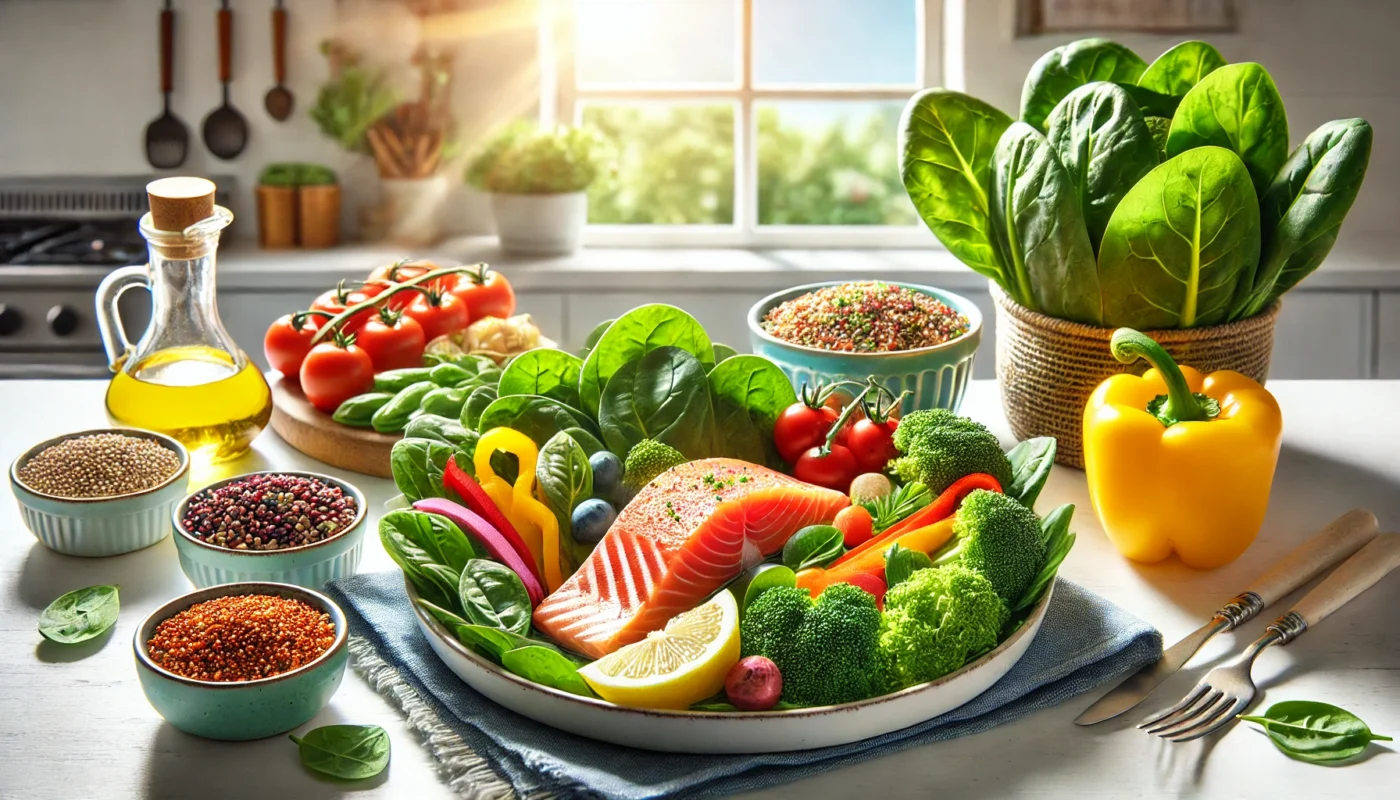MSG is a flavor enhancer derived from glutamic acid, a naturally occurring amino acid found in various foods like tomatoes and cheese. MSG imparts the umami taste, which is one of the five basic tastes alongside sweet, sour, bitter, and salty. It is commonly added to processed foods, fast foods, and Asian cuisine to enhance flavor.
Tag Archives: food labels
In today’s fast-paced world, maintaining a healthy diet can often seem like an overwhelming task. With the demands of work, family, and social commitments, it can be challenging to find the time and energy to focus on what we eat. However, with the right knowledge and tools, adopting a nutritious diet becomes a manageable and rewarding endeavor. This article delves into the essential healthy diet foods you should incorporate into your daily routine, offering a blend of scientific insights and practical advice. By embracing these dietary changes, you can enhance your physical health, mental well-being, and overall quality of life.
Tendonitis can be a painful and frustrating condition. It’s characterized by inflammation and irritation of the tendons, the fibrous tissues that connect our muscles to our bones.
For many, the journey to relief can seem daunting. But did you know that your diet can play a significant role in managing tendonitis?
Certain foods can exacerbate inflammation, worsening the symptoms of tendonitis. Conversely, other foods can help reduce inflammation, aiding in recovery.
This article aims to guide you through the maze of dietary choices. We’ll delve into the science behind how diet impacts inflammation and tendon health.
We’ll identify specific foods that may worsen tendonitis and should be avoided. We’ll also highlight beneficial foods that can support your recovery journey.
Beyond that, we’ll explore holistic and alternative approaches to managing tendonitis. This will provide a well-rounded perspective on the condition.
Whether you’re a fitness enthusiast, a health enthusiast, or a medical patient, this comprehensive guide will equip you with practical dietary strategies for tendonitis relief.
So, let’s embark on this journey towards understanding and managing tendonitis through diet. Your path to relief could be just a few dietary adjustments away.
Artificial sweeteners are a common part of our diets. They’re in everything from diet sodas to sugar-free desserts. But have you ever wondered about their impact on your health? Specifically, could they be causing your joint discomfort?
Joint pain is a common ailment. It can be caused by a variety of factors, from arthritis to injury. But could your diet be contributing to the problem? This is a question that many health enthusiasts, fitness buffs, and medical patients are asking.
Aspartame is one of the most common artificial sweeteners. It’s used in many low-calorie and sugar-free foods. But there’s been controversy over its safety since it was first approved.
Some people report joint pain after consuming aspartame. But is there a scientific basis for this? Or is it just anecdotal evidence? This article aims to delve into the research and provide a comprehensive understanding of the issue.
We’ll explore the potential link between aspartame and inflammation. We’ll also look at other artificial sweeteners and their possible effects on joint health. Our goal is to provide you with the information you need to make informed decisions about your diet.
Whether you’re a fitness enthusiast, a health enthusiast, or a medical patient, this article is for you. We’ll provide practical, in-depth, and detailed advice about how to optimize your health and fitness. Let’s dive in and explore the question: Do artificial sweeteners cause joint discomfort?
Inflammation is a natural response of our bodies to injury or illness. However, when it becomes chronic, it can lead to serious health issues.
Enter the role of an anti-inflammatory nutritionist. These professionals guide us in using diet to manage inflammation.
But what does an anti-inflammatory diet look like? And how can it impact our health, including the health of our skin?
This article aims to answer these questions. We’ll delve into the science behind inflammation and its connection to diet.
We’ll explore the role of an anti-inflammatory nutritionist. We’ll also discuss how chronic inflammation can affect skin health and appearance.
We’ll provide practical tips for implementing an anti-inflammatory diet. These tips are based on advice from experienced nutritionists.
Whether you’re a fitness enthusiast, a health enthusiast, or a medical patient, this guide is for you. Let’s embark on this journey towards better health through nutrition.
Cancer is a complex disease that affects millions worldwide. It’s a battle that requires a multifaceted approach.
One such approach is through diet. Specifically, an anti-inflammatory diet.
But what is an anti-inflammatory diet? It’s a way of eating that aims to reduce inflammation in the body. Inflammation is a natural response to injury or illness, but when it becomes chronic, it can lead to serious health issues, including cancer.
Research suggests that certain foods can either promote or inhibit inflammation. An anti-inflammatory diet emphasizes foods that fight inflammation, such as fruits, vegetables, whole grains, and healthy fats.
Conversely, it minimizes foods that can trigger inflammation, like processed foods, sugary drinks, and red meat.
But how does this relate to cancer? Chronic inflammation can damage DNA and lead to cancer. By reducing inflammation, we may be able to lower the risk of cancer and improve overall health.
This article will delve into the benefits of an anti-inflammatory diet for cancer. It will provide practical strategies for implementing this diet into your daily life.
Whether you’re a fitness enthusiast, a health enthusiast, or a medical patient, this guide aims to help you understand and apply the principles of an anti-inflammatory diet for improved health outcomes.






